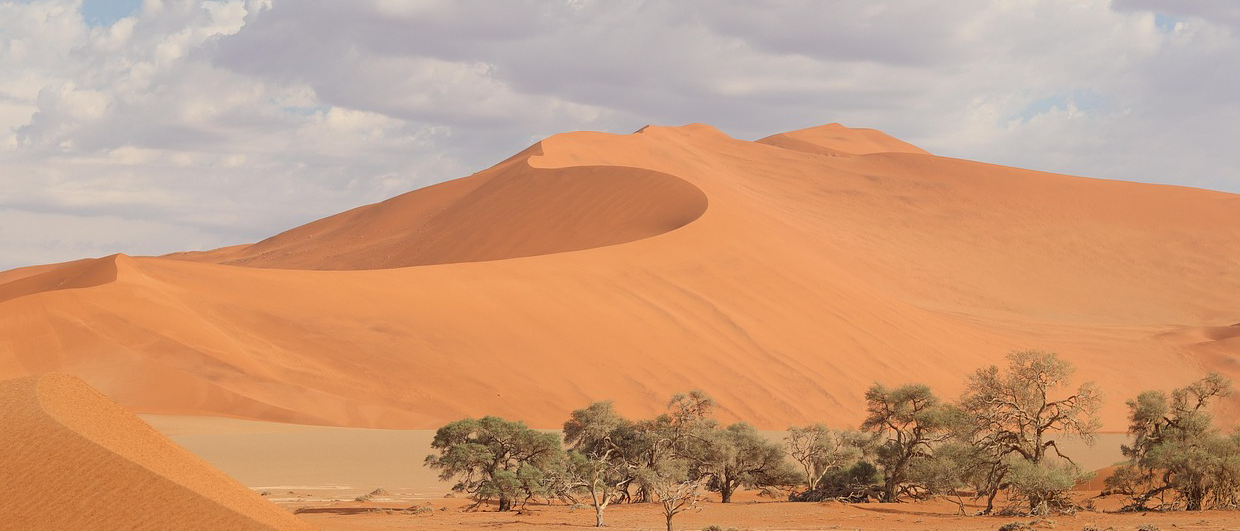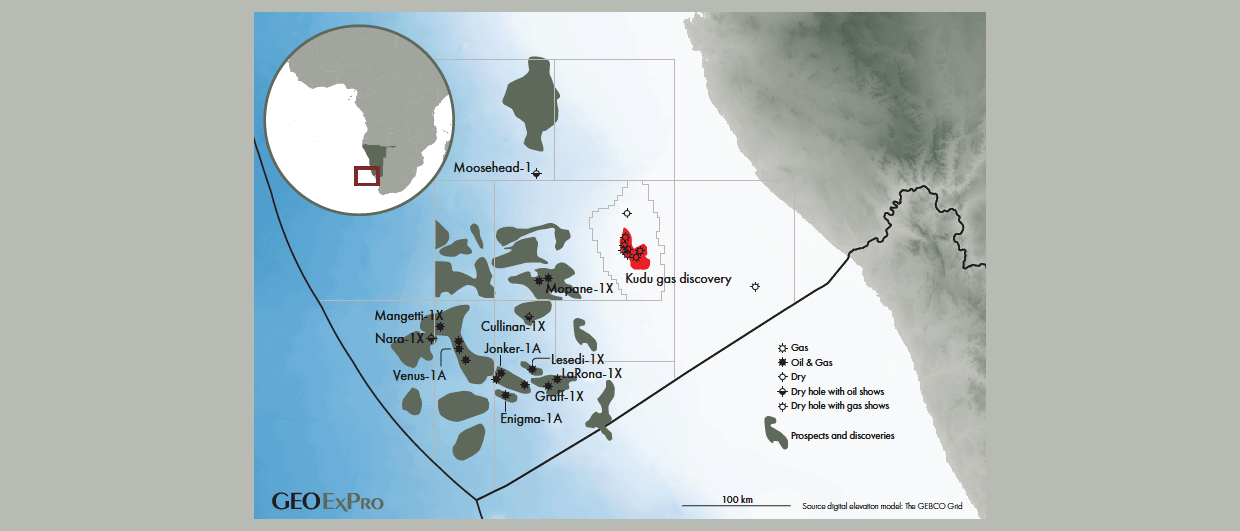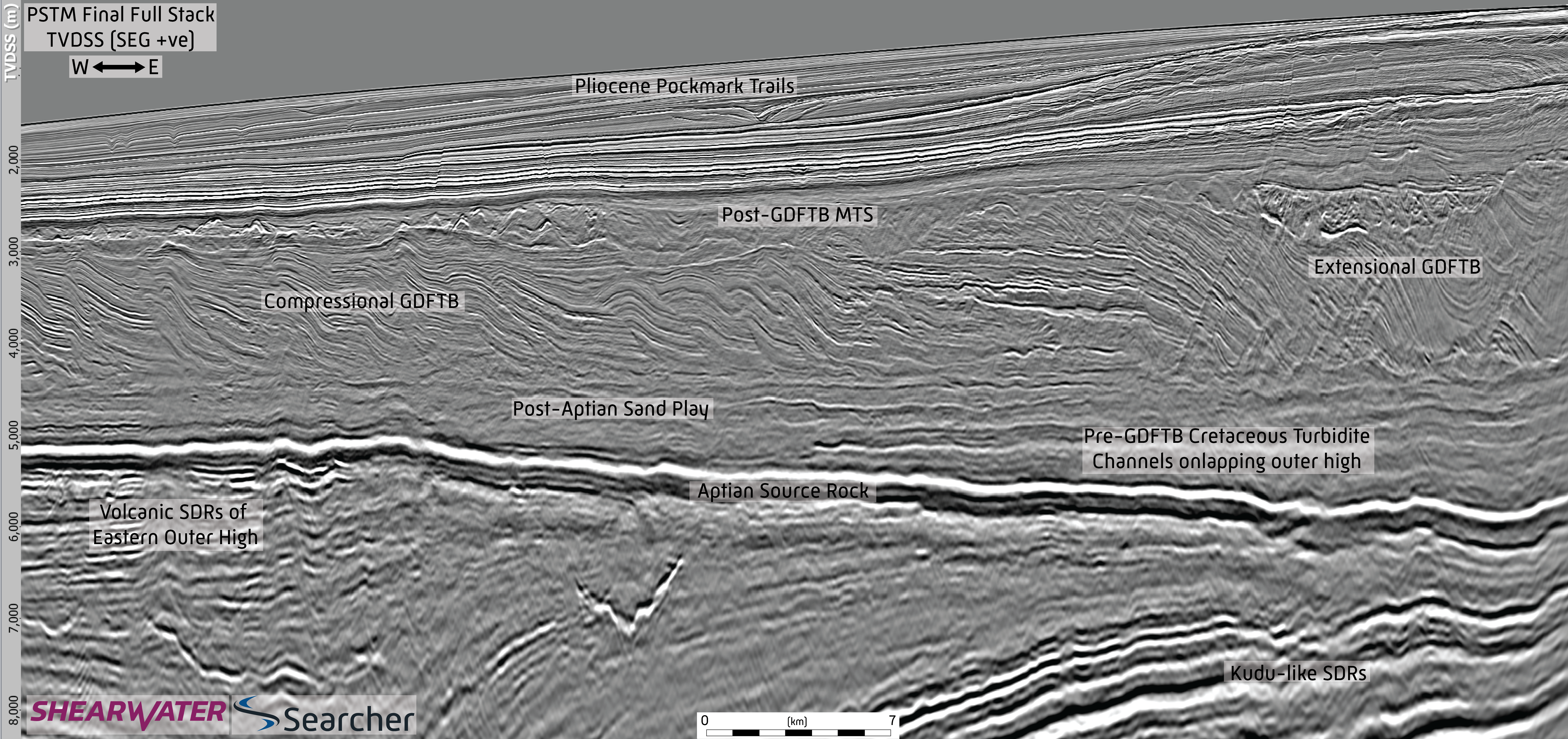As the exploration community read the news around Rhino Resources’ Volans-1X “high liquid-yield gas condensate” discovery this week – is it good news to have proven yet another fluid type? – a little further north, BW Energy is now drilling away the Kharas-1 well to the northwest of the Kudu gas field.
The target of Kharas-1, based on conversations with people with knowledge on the matter and other public sources, is interpreted to be a combination of an updip equivalent of the Mopane reservoir sand and the Kudu structure itself. It is especially this deeper target that is interesting, as it raises the question of whether BW Energy could be looking for oil at a slightly deeper level, downdip of the Kudu field reservoir itself.
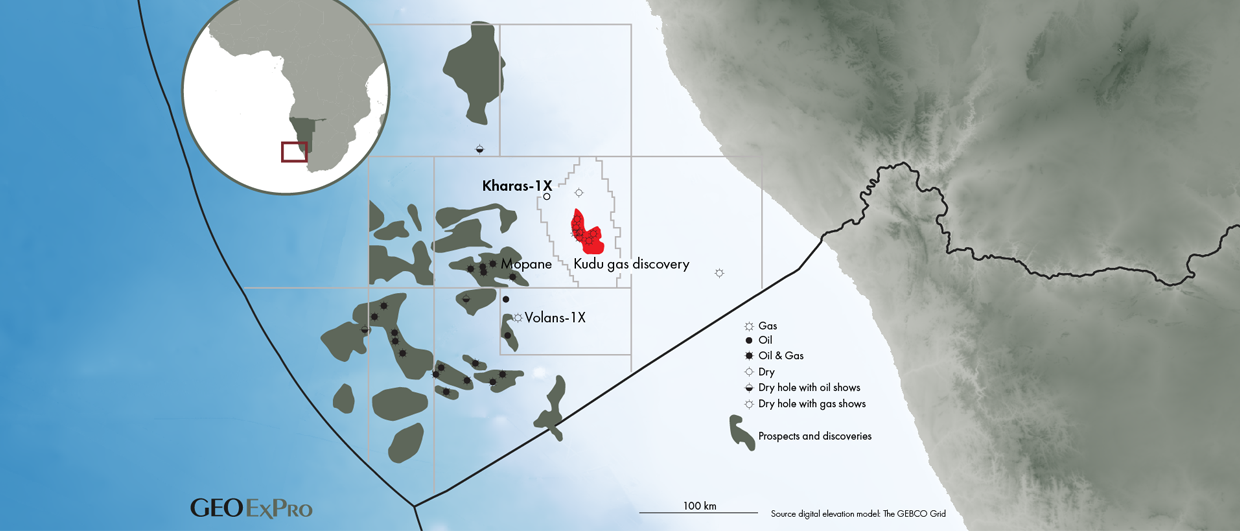
The Kudu gas field was serendipitously discovered in 1974 by Chevron through drilling deeper than the original target – no closure could be mapped on seismic at the time – and has had multiple owners since. However, so far, it has proven difficult to monetise the estimated 1.3 Tcf resource.
The gas in Kudu is very dry and has been noted to contain high concentrations of diamondoids, a specific type of hydrocarbon with high thermal stability. These observations have led researchers to interpret the gas as being sourced from cracked oil, a process whereby hydrocarbon molecules are broken down until mostly methane and where only the most thermally stable molecules remain – such as the diamondoids.
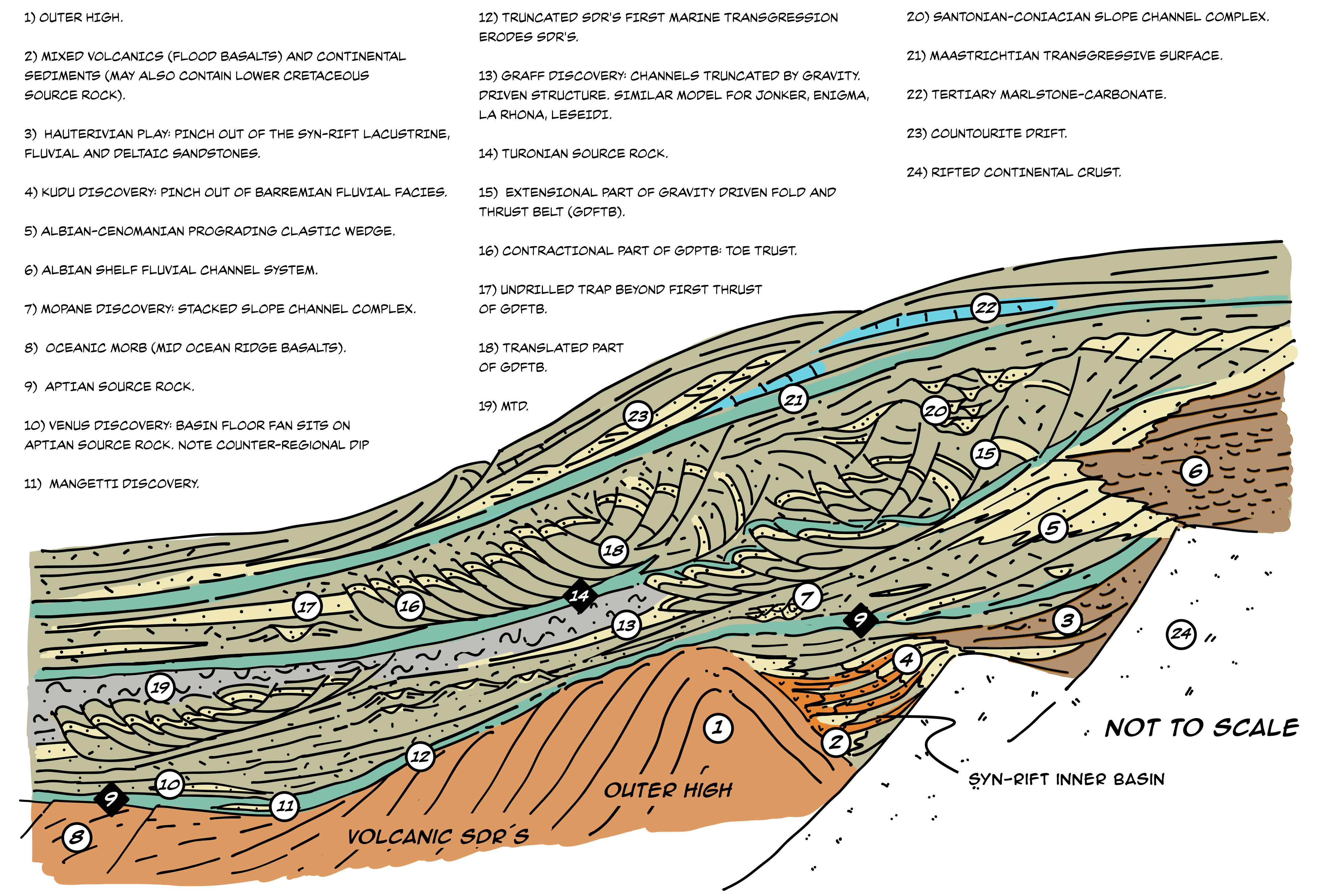
The question then is, did the cracking happen in the Kudu reservoir itself, or at deeper levels with onward migration to where it is currently found? Gion Kuper, who studied the Kudu field extensively when he worked for Tullow Oil as a petroleum systems expert, thinks that it is plausible that the Kudu gas migrated into the currently mapped closure from other places. “The main reason for this,” he says, “is that the current temperature in the Kudu reservoir, although around 160 °C, is still a bit low for the extensive level of thermal cracking suggested by the geochemical data.” It is also thought that temperatures may not have been much higher in the past. This makes a case for another accumulation to exist, possibly nearby, although finding oil may be a stretch.
It is that slightly deeper reservoir that BW Energy might be trying to prove now, in the hope that there is oil remaining. Finding a deeper level of hydrocarbons would also imply that a deeper, potentially lacustrine source rock – older than the Barremian-Aptian Kudu Shale source rock overlying the gas reservoir – is involved in generating the bulk of the hydrocarbons for Kudu.
“In addition to hydrocarbon phase, reservoir quality in the Kudu target might be one of the key risks,” adds Gion. “At these elevated temperatures, cementation can be a significant issue, as we have also seen with other discoveries nearby.” Saying that, if the oil was cracked in another place on the Kudu structure, there must be something somewhere, so it is probably worth drilling into it. Let’s see if BW Energy can make Kudu gas, and maybe oil, work.

